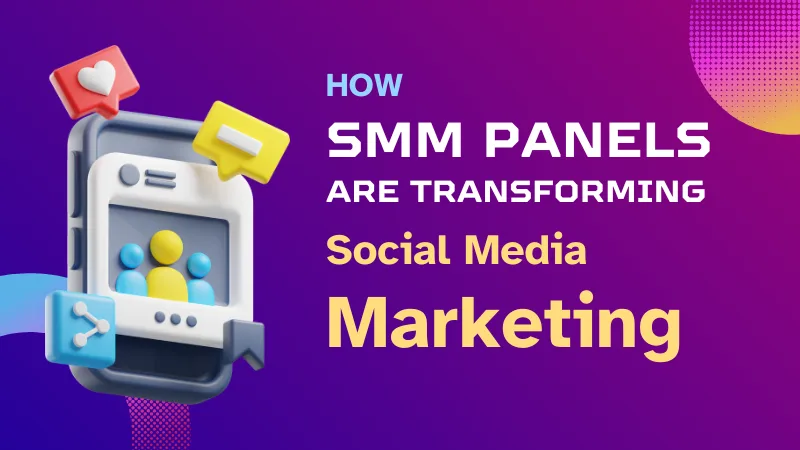How SMM Panels Are Transforming Social Media Marketing
Marketers look for efficient ways to gain initial traction and validate campaigns as social platforms grow more crowded. SMM panels—web dashboards that let users purchase engagement like followers, likes, views, and comments—have matured from simple boost tools into practical components of many marketing workflows. Platforms such as TheBigPython now position these services alongside analytics and delivery controls, helping marketers test ideas, seed visibility, and accelerate discovery when used responsibly. This article explains how panels work, their value, risks, and how to use them ethically to support sustainable growth.
What SMM Panels Are and How They Work
An SMM panel aggregates services from multiple providers into a single interface. A marketer selects a platform (Instagram, TikTok, YouTube, X, LinkedIn, etc.), cry pace, pays, and watches the dashboard report results. Basic offerings deliver raw numbers quickly, while advanced panels provide options such as drip-feed (staggered delivery), retention-focused packages, and API access for agency workflows.
Modern panels increasingly combine automation and analytics. They report retention, response patterns, and sometimes simple demographic signals so users can evaluate how purchased engagement affects visibility and downstream metrics like click-throughs or conversions. This integration turns panels from blunt instruments into tools for short-term validation and controlled experiments.
The Transformative Benefits
Rapid Visibility
New accounts and fresh campaigns frequently struggle to appear in recommendation engines. A modest initial lift can help content surface in discovery feeds, increasing the chance of organic interactions.
Cost-Effective Testing
Panels let teams test creative variations and headlines at a lower cost than broad paid advertising. Running small, targeted boosts reveals which assets attract attention before committing larger ad spend.
Social Proof That Encourages Action
Increased visible engagement often boosts user trust. When a post receives consistent likes or comments, visitors are more likely to explore a profile or click a link. This initial perception can transform casual viewers into genuine followers or customers.
Faster Learning Cycles
Panels enable rapid iterations: try different thumbnails, captions, or posting times to see which variables move the needle. When paired with analytics, those experiments inform longer-term content strategies.
When applied as tactical experiments, the above advantages help teams validate hypotheses and prioritize investments that move business metrics.
Challenges and Risks
Quality Variation
Not all providers deliver the same level of authenticity. Low-quality packages may include inactive or bot accounts, which can inflate vanity metrics without generating meaningful engagement.
Platform Policy Exposure
Social networks frequently update their enforcement rules. Aggressive or unnatural delivery patterns may lead to penalties, reduced organic reach, or temporary account limitations.
Reputation and Trust
Buyers should take brand perception into account. Relying too much on purchased engagement can backfire if audiences or partners perceive inauthentic behavior.
Misplaced Expectations
Panels should be treated as strategic testing tools rather than replacements for authentic content or community engagement. High numbers alone do not create loyal audiences; sustainable growth still depends on valuable storytelling and consistent interaction. Some marketers even experiment with video-focused SMM solutions, such as YouTube panel services, to understand how early engagement can influence reach and audience behavior. The most effective approach is to work with providers that focus on genuine retention, avoid bulk or one-time boosts, and measure meaningful metrics like watch time, comments, and conversions instead of just follower counts.
Real-World Use Cases and Insights
Marketers utilize panels in targeted and measurable ways:
- New Product Launches: A slight engagement push around launch posts can help place content in recommended spots, increasing click-through rates and early sales.
- Creative Testing: Agencies can validate which creative concepts resonate before investing in a paid ad campaign.
- Channel Seeding: Creators use moderate boosts on early uploads to trigger algorithmic recommendations, attracting organic subscribers.
Practitioners report the most consistent gains when boosts support content that is already showing organic promise. In these cases, purchased engagement serves as a catalyst rather than a crutch.
Best Practices for Ethical, Effective Use
- Vet providers for transparency. Demand clear retention stats and source details.
- Use drip-feed delivery. Staggered engagement mimics organic behavior and lowers detection risk.
- Test small and measure impact. Start with limited boosts and track conversions, watch time, or click-through rates.
- Prioritize retention and real-user signals. Packages that encourage repeat interaction deliver more lasting value.
- Combine with quality content. Use panels to amplify posts that already perform well organically.
- Monitor account health. Watch for sudden drops in reach or platform notifications and pause campaigns if issues arise.
A single, well-placed contextual link to a trusted SMM panel provider in editorial copy can also help readers find reputable options; for example, linking the phrase “SMM panel services” to a vetted provider page gives readers a clear path to explore tools responsibly.
The Direction Ahead
Expect panels to evolve toward better targeting, more verified interactions, and tighter analytics. Automation and machine learning will refine delivery to match real engagement patterns, while reputable providers will emphasize transparency and security to maintain client trust. At the same time, platforms may tighten authenticity checks, so providers prioritizing verified, retention-focused offerings will be better positioned for long-term viability.
When panels improve the quality of interactions—rather than just the quantity—they will integrate more cleanly into sustainable marketing stacks, helping teams run faster experiments and scale what works.
Conclusion
When used thoughtfully, SMM panels can accelerate discovery, help validate ideas, and reduce the cost of early experimentation. They are tools that support decision-making, not shortcuts to community-building. Marketers can use panels to complement content strategies and achieve measurable outcomes without sacrificing brand integrity by choosing transparent providers, testing deliberately, and prioritizing long-term engagement metrics.





